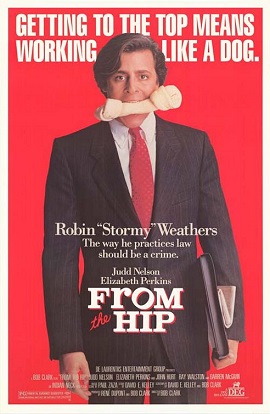Set during World War II, 1984’s A Soldier’s Story opens with a murder.
On a rural road outside of a segregated army base in Louisiana, someone has gunned down Sergeant Vernon Walters (Adolph Caesar). At the time, Walters was staggering back to the base after a night of heavy drinking. Both the local authorities and Watlers’s fellow soldiers assume that the murder was the work of the Ku Klux Klan. Captain Richard Davenport (Howard Rollins) isn’t so sure.
Captain Davenport is the officer who has been assigned to investigate the murder. From the minute that he arrives at the base, the soldiers stare at him. As Cpl. Ellis (Robert Townsend) explains it, the enlisted men are shocked because they’ve never seen a black officer before. Some of the soldiers admire Davenport while other view him with suspicion, wondering what Davenport must have done or who he must have sold out to earn his commission.
Meanwhile, the other officers (who are all white) view Davenport with a combination of condescension and hostility. Col. Nivens (Trey Wilson) only allows Davenport three days to wrap up his investigation and assigns the polite but skeptical Capt. Taylor (Dennis Lipscomb) to work with him. Taylor suspects that Walters may have been murdered by the openly racist Lt. Byrd (Wings Hauser!). Davenport, however, isn’t so sure. Even though the official story is that Walters was a tough but fair sergeant who was respected by his company, Davenport suspects that one of them may have killed him.
Davenport and Taylor start to interview the soldiers who actually had to deal with Walters on a daily basis. Through the use of flashbacks, Walters is revealed to be a far more complex man than anyone knew. We see that Walters was a man who was bitterly aware of the fact that, even after a lifetime of military service, he was destined to always be treated as a second-class citizen by the nation that he served. Unable to strike out at the men who the army and society had placed over him, Walters instead struck at the men serving underneath him. While the man in Walters’s company wait for word on whether or not they’ll be allowed to serve overseas, Davenport tries to determine if one or more of them is a murderer.
A Soldier’s Story was adapted from a play but director Norman Jewison is careful to prevent the material from becoming stagey. Effortlessly transitioning from the film’s present to flashbacks of the events that led to Walters’s murder, Jewison crafts both an incendiary look at race relations and a compelling murder mystery. He’s helped by a strong cast of predominately African-American actors. In one of his earliest roles, Denzel Washington plays Pfc. Peterson with a smoldering intensity. David Alan Grier and Robert Townsend, two actors known for their comedic skills, impress in dramatic roles. Seen primarily in flashbacks, Adolph Caesar turns Walters into a complex monster.
And yet, with all the talent on display, it is Howard Rollins who ultimately steals the movie. As a character, Captain Davenport has the potential to be a rather thankless role. He spends most of the movie listening to other people talk and, because of his status as both an officer and a black man in the rural south, he’s rarely allowed to show much anger or, for that matter, any other emotion. However, Rollins gives a performance of such quiet intelligence that Davenport becomes the most interesting character in the movie. He’s the ultimate outsider. Because of his higher rank and his role as an investigator, he can’t fraternize with the enlisted men but, as an African-American, he’s still expected to remain separate from and differential to his fellow officers. As the only black officer on a segregated base, Davenport is assigned to stay in an empty barrack. One of the best scenes in the film is Davenport standing alone and surveying the stark layout of his temporary quarters. The expression on his face tells you everything you need to know.
(Towards the end of the film, when Davenport finally gets a chance to drop his rigid facade and, if just for one line, be himself, you want to cheer for him.)
A Soldier’s Story was nominated for best picture but it lost to another theatrical adaptation, Milos Forman’s Amadeus.





